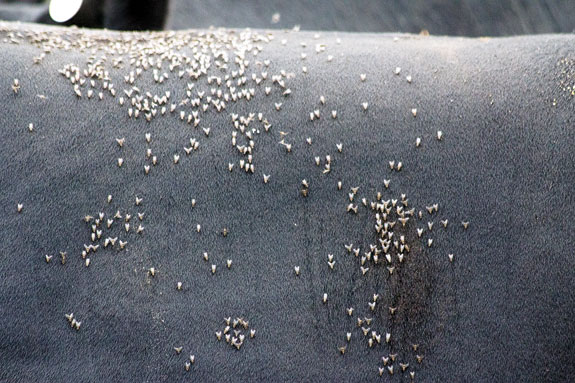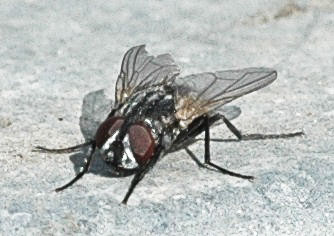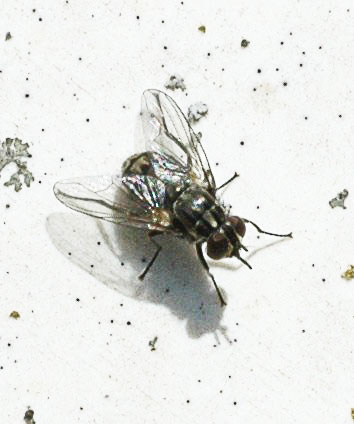In addition, stable flies can cause animal stress, weight loss, reduced feed efficiency and decreased milk production. The most economical way to control flies is through integrated pest management (IPM).
Roger Gold, professor and endowed chair at the Center for Urban & Structural Entomology at Texas A&M University says, “The basic steps in IPM program are:
- Monitor to determine species and population size
- Develop a management plan
- Implement plan
- Reevaluate the program (monitoring)
- Make needed adjustments to the plan
The overall goal is to break the life cycle of the insect and prevent formation of adults.”

Sonja Swiger, Texas AgriLife Extension entomologist at Stephenville says, “IPM is the integration of biological, cultural and chemical methods to control insects or other pests.
One of the benefits of IPM is the utilization and preservation of natural insect predators, which lessens the need for insecticides.
Reduced pesticide use lowers the risk of insect resistance and results in a more economical control program.
Sanitation is an important part of IPM and not only helps in insect control but aids in prevention of internal parasite and pathogen problems in livestock.”

House flies
“House flies are common pests around animal quarters and, collectively, they harbor more than 100 disease organisms,” said Gold.
“The flies don’t hurt by biting or stinging, but they irritate animals while feeding on mucus around their nostrils.”
Gold says females deposit 50 to 100 egg batches as they feed on moist organic matter such as manure, rotting hay, silage, feed or garbage.
They are very prolific, completing their life cycle in seven to 14 days. Their range is about seven miles.
“Population size can be monitored with light traps or sticky paper,” Gold added. “A significant increase in fly catch from one week to another is an alert to employ control measures.
The first step in controlling house flies is to eliminate their breeding sites. Remove manure from corrals and other cattle congregation areas and spread the waste thinly on pastures or turn it into compost.
Maintain good corral drainage and prevent the development of wet areas around water troughs and feeders.”
Fly parasites, sold by several commercial firms, can be used to supplement other fly control methods, Gold said. “Insecticides should be used to reduce remaining adult fly populations only after breeding sites have been eliminated.”
“Residual insecticides are applied to rest areas indicated by fly specks,” says Lee Townsend, University of Kentucky Extension entomologist.
“Available residual insecticides include cyfluthrin, 1-cyhalothrin, permethrin, spinosyn and stirofos. The first three chemicals are pyrethroids – spinosad is the active ingredient in spinosyn and stirofos is an organophosphate.
The pyrethroid insecticides sell under several trade names, so read the labels or consult with the dealer to ensure the right product is purchased.”
“Space sprays delivered as mists or fogs through foggers or timed- release aerosols provide a quick knock-down of adult flies, particularly in enclosed areas,” continued Townsend.
“The chemical in these systems is usually pyrethrins that have short residual activity. Misting systems will not solve fly problems if breeding sites are not addressed.
“Fly baits are effective when there is not a competing food source available. The active chemical ingredient in fly baits is imidacloprid, methomyl or trichlorfon. Methomyl is sold under several trade names.”
“When insecticide use becomes necessary it is very important to alternate applications among chemical types to avoid building resistance,” said Gold.
“Pyrethroids, spinosyn and organophosphates are different chemical types. In 20 life cycles, insects become resistant to a chemical.
Since insect life cycles are normally completed within a few weeks, resistance to an insecticide can be established very quickly.”

Stable flies
“House and stable flies look similar, but their mouth parts are different,” Swiger explained. “Stable flies have piercing mouth parts that allow them to cut skin and draw blood.
Their bites are painful to animals and people working in the area.”
He added that stable flies stay on animals for only a few minutes and then move to walls, fences or other surfaces to digest their meal.
They attack many areas on an animal, but primarily the legs. The stable fly completes its life cycle in three to four weeks and females lay several batches of 40 to 80 eggs in wet straw or decomposing vegetation mixed with urine or feces.
“Economic threshold treatment level is two to four flies per leg and the same control methods used for house flies apply to stable flies. The only exception is that baits are not effective for stable fly control.”
Successful fly control programs result from identifying the species and determining if the population size is at or above its economic threshold.
The most effective and economical control will result from the use of IPM. If an insecticide is required, read and study the product label before application. ![]()
PHOTOS
TOP: Adult fly (illustration by Kevin D. Brown)
MIDDLE: Successful fly control programs identify the species and determine if the population is above or at the economic threshold. Staff photo.
Other two photos provided by author.







